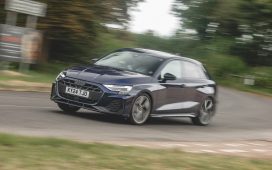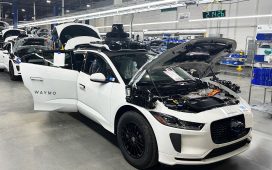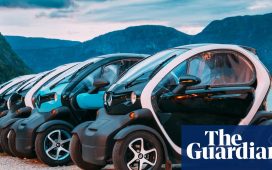I am the kind of person who can easily come up with way above average ideas, but find I am way below average with the ability to execute them. My plans are great; carrying them out—not so good. Perhaps I am plagued with fear of failure. If I have a terrific idea, testing it may only prove I was wrong; by not testing it I can bask in the illusion of wisdom. Consequently, it is far easier for me to come up with ideas of what others should do rather than do anything myself. Maybe this is why I became a professional counselor. I got paid to give advice, not follow it. Some of the most difficult things I ever did, was following the same advice I easily gave to others.
Many years ago, I had a job working at Dave Edwards Toyota. I lasted only six weeks. It wasn’t because I was incompetent. I sold a few cars, not a lot, but pretty good for a newbie. The problem was I was a single-parent raising two young daughters, and I needed a job—any job—as there was no opportunity to work as a therapist at that time. Then, one fateful Saturday, prime time for car sales, I looked at my watch and realized I had to pick up my daughters from childcare in less than thirty minutes. What should I do? Every salesperson, save me, was in the midst of selling a Toyota.
Relief came when a customer, claiming to be a personal friend of Dave himself, said he and his wife came in just to test drive the new Avalon. I had plenty of time to simply provide a test drive, and still leave work in thirty minutes to get my kids.
Perhaps it was my low-key, no pressure approach, as I wanted them to like the car, just not buy the car—at least not today. I told them, “Do you know the difference between the Toyota Avalon and the low-end Lexus?” They said they didn’t know, so I replied, “Only the name— except the Avalon is $5000 less expensive.”
The joyride completed, I had just a couple of minutes before I needed to leave. Then they completely caught me off guard. “We’ll buy it!”
The dealership was prepared for such scenarios, all I had to do was pass the sale to another salesperson. We would split the commission 50-50. Only this evening, there was no other salesperson willing to give up earning a full commission, to accept a half-commission. Frantically, I searched for somebody— anybody—to sell the car to my customer. Crestfallen I turned to the manager. He told me to ask the finance officer. The finance officer refused saying it wasn’t his job. I didn’t know what to do. I couldn’t neglect a buying customer, but I couldn’t neglect my children and leave them stranded. I went back to my boss and confessed my dilemma. He told me to go take care of my daughters; he’d tell the finance officer to take the sale.
Next Monday I was fired. They said they were sorry, but they needed someone who could work anytime without encumbrances—like a single father with custody of two children.
And guess what car I decided to buy then next time I needed a newer one? Not the Avalon, but the Prius. Even then I was keenly aware that climate change was soon becoming the greatest crisis facing the world. What could I, only one person, do about global warming? Buy a hybrid that got fifty miles per gallon!
I finally did. I saw a used Prius for sale on the lot of a small dealership near me. It listed for $23,000. I walked in and told them I’d take it for $19,000 (more than I ever paid for a car.) The dealer said he shouldn’t do it, but agreed without dickering. He realized I knew what the car should sell for.
Long before the Prius died, I inherited my father’s low-mileage, almost-new Buick. My Dad lived into his 90’s but unfortunately thought he could still drive safely. The nasty-looking dents and abrasions on both front and rear fenders, indicated more than once he failed to safely navigate his Buick into the garage. I paid to have the exterior repaired and re-painted.
The car we own reflects our politics and personality. Before buying the Prius I fell in love with the Chrysler PT Cruiser. I loved the design, but it got poor gas-mileage, was uncomfortable, and didn’t have enough power to properly ascend mountain roads. Meanwhile, my father bought Buicks. He could afford more expensive cars, but was concerned with comfort, not luxury or status. He was the last person who would pay more than $50,000 for a car when he could get all the car he needed for about $40,000. As a Republican, the last thing he was concerned about was buying a car that got terrific gas mileage that was kind to the environment. In his library he had a book by a “scientist” who argued global warming was an exaggerated hoax.
By the time I got my father’s Buick, the Prius had put on lots of miles, several years, and too many dents. The roof was pock-marked from a severe hailstorm. I pocketed the insurance money and drove an ugly car. Even so, for a couple of years I barely drove the Buick preferring the high gas mileage of the Prius.
Until the Prius died. A battery transplant could have saved it, but with an almost new Buick sitting in my driveway, it was time to let go of the Toyota.
I drive from Greenville to Asheville about twice a week, to play Table Tennis. I am a tournament level player and this way I can train six days a week. Yet every time I drive back and forth to Asheville in the Buick, I feel like a hypocrite as I am contributing to climate change just to play Table Tennis.
Practically speaking, if we could get rid of every gas-powered vehicle on the road today, and replace them all with fully electric cars—doing so would increase rather than decrease climate change. Why? Very simply, it takes a huge amount of energy to manufacture each car. To best protect the planet, we should first use up all the gas-powered cars, and then gradually replace them with electric-powered cars.
Only that’s not what we are doing. Instead we are replacing all old gas-powered vehicles with new gas-powered vehicles. Yet we consists of millions of people, including progressive Trump-hating liberals and Democrats. When the Covid pandemic was in full swing, there were too many ignorant fools in denial who refused to become vaccinated. But millions more did become vaccinated, which helped ameliorate the public health crisis. But in the midst of a sudden pandemic, it is much easier to perceive action needs to be taken, than when dealing with catastrophic climate change, when the climate gradually gets worse year after year. True, in the midst of a hurricane, flood, or raging fire, we will take immediate action to react to the crisis; but when conditions are “normal” we tend to forget the time to fight against climate change is now.
So my brilliant idea was to buy a fully electric vehicle, just not a Tesla or another make that was way beyond my budget. I soon found out doing so was far easier said than done. My decision to get vaccinated and boosted only cost me a brief pain in my shoulder. Spending over $50,000 for a good all-electric vehicle would cost me a hell of a lot more. Sure, I want to save the planet, but I am on a fixed income generated from money held in savings. If I dip too much into these savings, I will have less money each month to live on. Can I even afford to do the right thing to prevent climate change?
Yes. The first thing I did (after years of saying I would do it one of these days) was to go solar. Not only did I get tax breaks, but each month I not only helped save the planet, I saved about $100 a month on my electric bill. (See, Solar on the Roof.)
So I figured by investing in an all-electric car, I could indirectly power my car—not with the oil from decomposed ferns and dinosaurs, but with the energy from the sun.
That was before I faced the sticker shock of what a good all-electric car costs up front. I read an excellent article, PHEV Vs. All-Electric: Which Plug-In Is Better For You? in which the author, Ron Cogan, argued that one of the best ways to reduce the initial cost of electric was to opt for a plug-in hybrid. According to the author, although both have advantages and disadvantages, for most people a good plug-in hybrid is the better choice. For example, I could get a 2022 Toyota Prime plug-in hybrid with only 12,000 miles for $32,000. A 2023 low mileage slightly used Hyundai all-electric Ioniq 5 costs about $10,000 more.
But I am not most people. I have solar panels on my roof. I would just need to spend an extra thousand dollars or two installing a charging station at home, to get the electricity from the solar panels into the car. The Ioniq 5 I was interested in had a MPGe of about 120. I thought this acronym stood for miles per gallon electric. It actually stood for miles per gallon equivalent, meaning the cost of electricity per mile would be approximately equal to the cost of gas, if the vehicle could get 120 miles per gallon. But since I would be getting electricity via solar power, the MPGe would befar superior. By dipping into my savings and investments, I could come up with the cash to buy the more expensive electric car. Moreover, I decided not to trade in my Buick. Being over ten years old, I wouldn’t get much for it anyway. Instead, I would give the Buick to one of my daughters, and she would give me her beat-up Toyota Corolla which already had 150,000 miles. Believe it or not, the Toyota listed as worth more than the Buick as it was two years younger. Regardless, I also figured the Toyota wouldn’t fetch much more in trade than the Buick, so rather than trade it in, I would keep it for a spare car. With solar panels, home charging station, and a back-up car, and money in the bank; I could afford to pay much more for a full electric vehicle—providing it proved to be a good investment.
When I worked at Toyota, I learned secrets of the trade that would be valuable when later buying a car. Although I was the professional Psychologist, my manager knew a lot about the nuances of human behavior. I had often wondered why cars, unlike most items, aren’t priced to sell, but rather the sticker price in the window is greatly inflated. I suspected it mostly was to create the illusion the buyer was getting a terrific deal when actually he was getting only a fair one. I figured it would save the dealerships both time and money, to simply list cars for what they were worth, instead of deliberately adding thousands to the sticker price, to create the illusion the customer was saving thousands of dollars. To get a really good deal, customers might have to haggle for an hour over the price. Since dealers do this every day, the customer is always at a disadvantage. But time is money. Without set realistic pricing, it might take twice as long for the salesperson to negotiate a deal acceptable to both buyer and seller. Perhaps, the dealer would get a little less money for each car, but the time saved would allow them the opportunity to sell more cars in the same period of time. Yet things are unlikely to soon change as long as Americans love bargains so much, they are willing to pay more to get one.
However, there are other reasons why the sticker price is obviously inflated. One is the psychological principle of anchoring. We don’t buy homes or cars every day, and consciously or not, we have a tendency to appraise the value of either home or car based on its listed selling price. By listing a home as worth $520,000, the seller is anchoring the customer to the idea the home is worth more than a half-million dollars. By listing a car as worth $52,000, the dealership is anchoring the customer to the idea that the car is worth fifty grand.
Another reason is that people become personally attached to their possessions after owning them for a while. Consequently, even when they concede it is time to sell, they feel like their car should sell for more money than it is actually worth. Unless someone has frequently watched the reality TV show Pawn Stars, customers forget the dealer buying the car needs to not only a make a sale, but a profitable one. When one customer at Dave Edwards Toyota was told her car was only worth $800, she refused to trade. My manager suggested she should try to sell the car herself to get more money. She did try, but returned within two weeks to trade in her old car for $800 as she couldn’t find anyone else willing to buy her car. Her car wasn’t even worth $800 to the dealer. The manager offered her that much to induce her to trade. As our manager frequently reminded us, “If the customer insists lis car is worth more, give lim more on the trade, and reduce the discount on the new car. If the customer insists the reduction on the sticker price is too little, give take off more on the new car, but pay less for the trade. Give the customer what le wants; we get just as much money either way.
Of course, all this assumes a customer is trading in lis old car for a much newer one. I decided not to turn in my Buick, but instead give this car to my daughter. By not trading, I could get a much bigger discount off the sticker price.
I also knew the best time to buy a car was at the end of the month, when salespersons are willing to make a better deal to meet their monthly quotas; and to buy at the end of the year when they are willing to make a better deal to meet their annual quota. Thus, the best time of the year to buy a car is just after Christmas and just before the New Year. Moreover, a 2023 bought in December 2023 will cost less than the same 2023 car bought in January 2023. The age of a car is measured two ways; how many years old it, is and how many miles it has. The value of the car is better expressed by miles; the cost of a car usually depends far more on age. This is why my daughter had to pay more to insure her Corolla than I needed to pay on my Buick. Even though the Buick had 75,000 fewer miles, it was two years older. You can get a better deal buying a new 2023 than by buying a new, already available, 2024. Consequently, used cars list the year of model in large print, and the number of miles driven, if listed at all, in small print. Technically, the 2024 is worth more, but this only matters if you plan to trade it in if a couple of years. The longer you plan to keep your car, the less the year matters and the more the actual miles matter.
Yet here I was, with all these bold ideas about getting an electric car just after Christmas, and by Christmas I had barely started reading on the internet whether I should go with a plug-in hybrid or a full electric car. I love to read reviews to rate which cars have the most bang for the buck, but could barely find any comparison information that wasn’t sponsored by a car manufacturer. I went to Consumer’s Report, but they charge $39 a year for their impartial evaluations. I used to get their magazine, but found unless I was making major purchase, like a car once in ten years, I didn’t need it. So on Saturday December 26th I went to the library. It was closed. Why hadn’t I done this research sooner? Time was running out. I returned home and signed up for a year’s online membership. If I am going to spend almost twice as much on a car than I ever have in my life, then an impartial appraisal was paramount. So with apologies to Consumer Reports the best deal on a quality full electric car is the 2023 Hyundai Ioniq 5, or the 2024 Ioniq 6.
Surprisingly, the newer, improved Ioniq 6 costs about the same as the older Ioniq 5. The more cars a company produces a year, the less the cost of each individual car. Since, expecting a greater demand, Hyundai is manufacturing more 2024 Ioniq 6 cars, they don’t have to charge more than they did for the 2023. Consequently more people who want the Hyundai Ionic, will prefer the newer Ionic 6 over the older Ionic 5. I decided to save money I would go with the Ioniq 5.
Then, I thought, as long as I am thinking it would be better to get the 2023 Ioniq 5, maybe I can find a used one with low mileage. I clicked a link at Consumer Reports to find how many used Ioniq 5’s were available in my area. There was one at a Hyundai dealership, about thirty miles away in Anderson.
planned to test-drive the Ioniq-5 in Anderson on Wednesday, test-drive the Prius Prime plug-in hybrid on Thursday, and buy whichever car I liked better on Friday. A friend and neighbor who knew more about cars than I did, said he would come with me. When we got to the Hyundai dealership, he said he found the car I wanted on the used-car lot. I looked at the sticker price. “This can’t be the car I saw on-line” I said. “The one on-line was listed for $37,500. This one lists for $44,000.” Turns out, it was the same car. Well, I was there to test drive the car anyway, even if this one was too expensive. Later, I discovered it was the same car that was listed for $37,500 by Consumer Reports.
Taking the car for a spin, I felt more like I was driving a computer with a steering wheel than a car. Later, chatting with two salespeople at once, (making me relieved I wasn’t outnumbered,) the sales manager left and then came back with his “best offer:” $37,500. Looking only at the bottom line, I said thank you and would consider his offer. I told them I wanted to test drive the Prius Prime tomorrow, and would then make my decision.
“What do I have to do, to get you to agree to buy the car today?”
“There is nothing you can do or say. I didn’t even bring a checkbook to make a down payment.”
“Suppose I told you could have the Ioniq 5 for free?”
“You can’t do that,” I protested, “You wouldn’t make any money.” He laughed, but realized I wasn’t going to parlay that day, even though he promised the price including everything, including tax, and was “$37,500 out the door.” Of course, I knew I still had to pay for extra to get an expensive home charging station installed. The portable one that came with the car wasn’t worth anything to me. Years ago I bricked in my garage for more indoor storage space. I would need to hire an electrician to install a Level 2, 240-volt charger.
“Don’t feel bad, guys. At least you made it to the finals. I will either buy this car here, or the Prius Prime somewhere else.”
Driving back home, I realized I made the right choice before accepting the dealer’s offer or negotiating for a lower price. Tomorrow I would call and ask for a lower price. They knew that once I had returned to Greenville, it would take more of an incentive for me to drive back to Anderson to buy the car. My father always told me it was best to sleep on a big financial decision, rather than get pressured to buy right away.
Shortly after waking up, I got an idea. Time is money. To test drive the Prius Prime would take most of the day. Even then, I would be comparing apples to oranges, or literally the merits of a good plug-in hybrid against a good all electric vehicle. So I planned to tell the salesman that I was lazy (true) and if he would reduce the price another $1500, I would buy the Ioniq 5, and not have to take the time to test-drive the Prius (also true.) I figured they already knew the Prius Prime would be much less expensive up-front, so it would be in their best interest to take the deal and eliminate the competition. I thought of asking them to lower the price $2000. But what if they then said the best they could do was to reduce it another $1000. We might end up settling on $1500 anyway, but why take the risk? They accepted the deal I offered, saving me another $1500.
I had finally actually done something I had said I was going to do. I told them I would drive back to Anderson to sign the papers and pay the full amount up front with no financing. They told me I would get no special discount for paying in cash. They admitted the dealership made money by financing, so it was literally in their interest to provide me with a car loan, rather than pay cash. I decided it was literally in my interest to pay cash, and not pay interest charges at all.
I thought the ordeal of making a huge financial decision was finally over. I was wrong. While signing all the required forms and paperwork, the financial person said he was obligated to explain the warranty. I got a certified used car with less than 7000 miles on the odometer. It was a service car used by the dealership. They sold such cars before reaching 10,000 miles. So I didn’t have to worry that a previous owner was dissatisfied with the car. By getting a slightly used car, I was saving thousands of dollars. Then the financial guy told me that the factory warranty I was getting excluded anything going wrong with the computerized electrical system. He said one computer chip, if malfunctioned, could cost $5000 to replace. However, if I purchased an additional bumper-to-bumper coverage, as I would if the car were brand new, I would have protection against such problems. Then he reassured me I could purchase additional bumper-to-bumper ten-year protection coverage for “only $4200.”
I was perturbed. If I needed this extra protection, why buy used? I would end up paying just as much with the bumper-to-bumper coverage as I would if I bought a brand new Ionic 5. And if I really needed the extra protection, why didn’t the salesmen tell me before I was about to write a check? Instead I was told the Ioniq 5 was mine “out the door” for $36,000, not $40,000. Seeing me balk at the idea of purchasing another warranty, the guy told me he would reduce the cost to $3600. And then he said I could pay it off in two years with interest-free monthly installments of only $152 per month. $I52 per month is still $3600 dollars. I felt pressured. The next thing I know, the guy opens the glass door, allowing a cold breeze to chill the room. Why did he do that? Was he feeling too warm? Now the small room was noisier and far less private. The reason for his ruse soon became apparent. Within a minute or two, a tall kindly well-dressed man just happened to stop in. He was the manager of the dealership. He told me the cost of repairs on electric cars were going up 15% next year, and that it would be foolish of me not to take advantage of the terrific deal of getting the $3600 bumper-to-bumper warranty. I was being double-teamed. Was this their version of my paying for undercoating? Every time I watch the movie Fargo, I get mad at the man who knows he is being ripped off, but pays extra for the undercoating at the car dealership. Finally, I said no. The next day two friends who know more about such stuff than I do said I did right. The special warranty wasn’t worth half of what they wanted to charge me.

My new car has been delivered and sits in my driveway. The new charging station will be installed Tuesday. Sometimes I wonder whether I was wise not at least test-driving the plug-in hybrid. Then I remember the real reason I decided to buy an electric car wasn’t to save money, or to make a great investment; it was to save the planet, and make the world a better place for my children and grandchildren. If we are ever going to save the planet, we must all but eliminate fossil fuels. It is easy to blame the Republicans, and indeed they deserve plenty of blame; it is easy to blame those who deny the science of climate-change, and indeed they deserve plenty of blame. It is easy to blame the oil and fossil fuel industry, and indeed they deserve plenty of blame, too. What is hard to do is to look in the mirror and blame ourselves. If we, liberal progressive Democrats aren’t willing to buy electric cars, who will? Every electric car sold tells Detroit and the auto-producing world that more electric cars need to be manufactured. The more cars that are manufactured, the less each one will cost, and the more gas stations will morph into charging stations. Then even more people will decide to buy electric cars. What a wonderful trend. Only you can prevent catastrophic climate change—and the best way to do that is to put solar panels on your roof and an electric car in your driveway.









